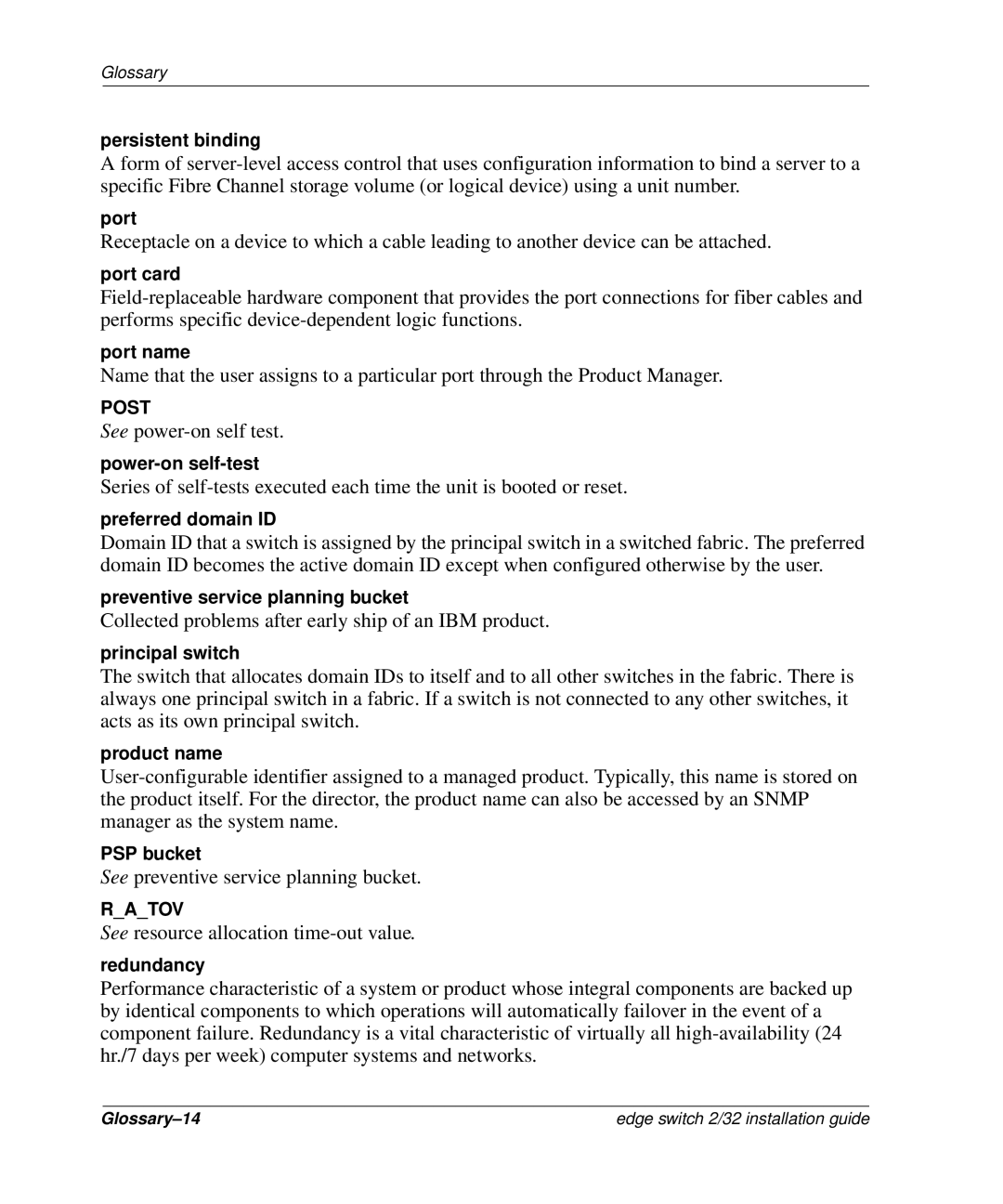
Glossary
persistent binding
A form of
port
Receptacle on a device to which a cable leading to another device can be attached.
port card
port name
Name that the user assigns to a particular port through the Product Manager.
POST
See power-on self test.
Series of
preferred domain ID
Domain ID that a switch is assigned by the principal switch in a switched fabric. The preferred domain ID becomes the active domain ID except when configured otherwise by the user.
preventive service planning bucket
Collected problems after early ship of an IBM product.
principal switch
The switch that allocates domain IDs to itself and to all other switches in the fabric. There is always one principal switch in a fabric. If a switch is not connected to any other switches, it acts as its own principal switch.
product name
PSP bucket
See preventive service planning bucket.
R_A_TOV
See resource allocation
redundancy
Performance characteristic of a system or product whose integral components are backed up by identical components to which operations will automatically failover in the event of a component failure. Redundancy is a vital characteristic of virtually all
edge switch 2/32 installation guide |
